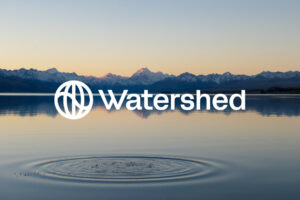Overcoming Procurement Challenges: Cost, Resilience, and Sustainability
If you’re a CPO (or other procurement leader) you are like the protagonist in a thriller that has not one but three exciting plotlines. Philip Marlowe, Sam Spade and even Sherlock Holmes himself would have trouble disentangling this drama and revealing the solution in the final scene! The key to joining all the dots is that everything is interconnected. As a procurement leader, you need to step back and see the big picture, but you also need an eye for the finest details.
The Three Plotlines: Cost, Resilience, and Sustainability
We focused on this dilemma at the Gartner Supply Chain Symposium/Xpo 2024 in Barcelona. The three plotlines are cost, resilience and sustainability.
1. Cost: The Eternal Motive
No surprises here. It’s the oldest motive in procurement. To bring down costs and deliver excellent value to your organization. But today, cost management is more of a science than an art and you have three main weapons in your scientific armory.
- Value Tracking: You need to get a full grasp of the facts. Implementing value tracking systems can help you to identify deviations from approved forecasts and proactively address them. This not only reduces financial leakage but also improves accuracy through collaboration with all interested parties and comprehensive reporting.
- Rapid Deployment: In a fast-paced environment, time is of the essence. By adopting simple and intuitive technological systems, companies can quickly configure their needs and start tracking value efficiently. Rapid deployment ensures that cost-saving measures are implemented without delay, maximizing their impact.
- Connected Processes: Nothing happens in a vacuum. You will increase the accuracy of declared savings by associating them to sourcing projects and supplier categories. In this way you will ensure that cost-saving initiatives are accurately tracked and reported.
2. Resilience: Navigating the Unexpected
Supply chain disruptions are like twists in the plot that nobody could have foreseen. As a procurement leader, you will face unexpected events that throw you off course. Resilience is your ability to bounce back, adapt and recover from disruptions. A lot will depend on your experience and good sense, but recent events have shown that you need more.
Here are three essentials for building your resilience.
- Technology Integration: Even if you had the intelligence and brainpower of Sherlock Holmes, you could not possibly know what risks are coming tomorrow, let alone in the months and years to come. That’s why CPOs are increasingly leveraging data feeds and technologies such as artificial intelligence and the Internet of Things to enable real-time monitoring and predictive analytics, allowing quick responses to avoid or mitigate supply chain disruptions.
- Diversification: Just as a private investigator needs to be adaptable and versatile, a procurement leader needs to be able to switch from one approach to another, seamlessly. Diversifying suppliers and sourcing strategies is one critically important way to do this. By reducing dependency on a single source you will minimize the impact of disruptions. Diversification spreads risk and enhances supply chain flexibility.
- Collaboration: Be honest with yourself. Even the most hard-boiled CPO won’t solve many challenging cases on their own. Communication and building trust go to the heart of your profession. Fostering strong relationships with strategic suppliers and partners is crucial for building resilience. Collaborative efforts ensure that your internal clients and external service providers are aligned and can work together to solve the toughest tests to your resilience.
3. Sustainability: The Ethical Frontier
Environmental, social, and governance (ESG) criteria have come to the fore in recent years. We all understand why; but given that most ESG issues arise in the supply chain, CPOs and other procurement leaders have been pushed to the forefront in the battle to ensure compliance. Ethical behavior, integrity and a desire to fight for justice have therefore become top traits that employers look for in a CPO, along with the tenacity needed to identify where you need to take action, which include the following:
- Environmental Impact: For most organizations, between 75% and 90% of carbon emissions occur in the upstream and downstream supply chain – so-called Scope 3 emissions under the Greenhouse Gas (GHG) Protocol. Again, this calls for strong analytical skills as you will need to investigate vast amounts of data to identify the specific hotspots where you can make the biggest impact (e.g. inputs such as steel, energy, building materials…) Here too, you can only succeed with the right technology combined with meaningful data feeds from a specialist.
- Social Responsibility: A CPO’s care of duty now covers protection of their employer’s integrity and reputation. It’s not good for your employer’s reputation if serious wrongdoing, like the use of forced or child labor is uncovered in your supply chain. But reputation aside, it’s just plain wrong if that kind of thing is happening! Technology and risk management data can help you get on top of the issue by providing transparency in the supply chain. This is all the more urgent with the passing of legislation to deal with the issue such as the German Supply Chain Due Diligence Act. But it’s also a matter of building trust with your clients and customers. People don’t want to buy from companies that tolerate wrongdoing.
- Governance: It can be a dirty world out there. Corruption, bribery, data breaches, money laundering, anti-competitive practices and other threats to ethical business are, regrettably, a fact of life. Once again, the CPO is in the front line of the struggle to uphold standards of good governance in business operations and public life. Do you monitor and screen suppliers on sanctions lists and politically exposed persons (PEP) lists to ensure that they are all above board? This is especially important when it comes to certain primary materials such as oil, gas and rare metals. You must also ensure that you have processes and technology in place to ensure data protection. For example, you would not want supplier data to be leaked to one of your client’s competitors, would you?
Overcoming Challenges and Ensuring Transparency
Transparency – the ability both to get the big picture and to drill down into the fine detail – is vital if you are to stay on top of the three challenges of cost-efficiency, resilience, and sustainability. The main obstacle that CPOs in most organizations have to overcome is that a lot of the supply chain information is siloed in different legacy systems. This means that different departments and functions work independently without sufficient communication or coordination. The result is inefficiencies, delays, increased costs, and reduced agility in responding to market changes or disruptions. And worst of all: risk.
JAGGAER’s Integrated Solution
At JAGGAER our approach is different. We offer the industry-specific expertise, operational technology and analytics to integrate all data relating to every aspect of the supply chain, from source-to-pay and beyond to circularity in the upstream. That’s why our solution is called JAGGAER One. It’s a single platform to support all your needs.
However, we’re also honest enough to admit that we can’t do it all alone. Collaboration is also a great virtue, and one of JAGGAER’s core values. That’s why we rely heavily on some excellent partners who bring their own expertise to the table, such as our fellow speaker at the Gartner Symposium, Christian Heinrich of carbmee, which provides vital activity-based information on emissions in the supply chain.
To find out more, watch this Ondemand-Webinar with carbmee.
If you’d like to hear more insights from Georg Rösch on this topic, listen to the podcast: “Balancing Cost, Resiliency, and Sustainability in Procurement.” You can find it here: Podcast Link.




